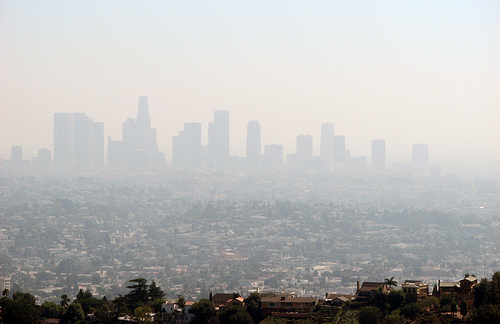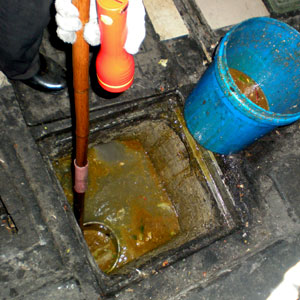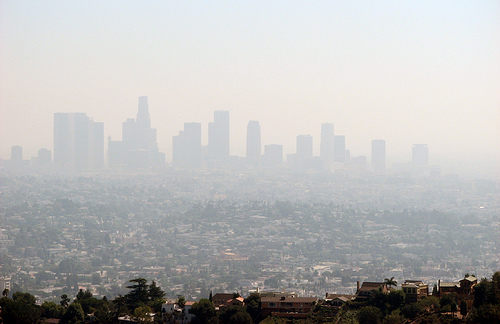 It isn’t yet clear which way Los Angeles is going.Photo: Ben AmstutzImagine a Los Angeles with reliable, modern public transportation. A Los Angeles with vibrant, walkable neighborhoods. A Los Angeles where people would be able to leave the car at home.
It isn’t yet clear which way Los Angeles is going.Photo: Ben AmstutzImagine a Los Angeles with reliable, modern public transportation. A Los Angeles with vibrant, walkable neighborhoods. A Los Angeles where people would be able to leave the car at home.
According to an excellent column in yesterday’s Los Angeles Times, a lot of the city’s residents, journalists, and politicians would like that vision to remain strictly imaginary.
The Times‘s architecture critic, Christopher Hawthorne, has written a thoughtful and cautionary piece about what he sees as a widening gap between those who favor a denser, more pedestrian-friendly LA and those who would prefer to remain in their cars — going as fast as possible, thank you very much.
On the one hand, Hawthorne notes the success of the city’s CicLAvia event, which closed seven miles of streets to traffic for a few hours and allowed pedestrians, bikers and skaters to see their city in a new way. He also gives a nod to expanding rail systems and plans for new parks downtown and in Santa Monica.
On the other, he remarks on the continued resistance to building the Purple Line subway extension, which would serve the city’s Westside, as well as opposition to denser housing developments in neighborhoods like Echo Park:
[M]any subway opponents [see] the issue of transit through an exceedingly narrow lens, assuming that the only plausible reason to build a line across the Westside is to make life easier for Angelenos driving around in their cars. For [these opponents], new mass transit will “improve their lives” only if it makes car traffic move measurably faster. Its only benefit is as a mechanism for “traffic relief.” It doesn’t seem to have occurred to [them] that anybody in Los Angeles will actually want to, you know, ride the new trains.
There are legitimate reasons to oppose the Westside subway, which comes with a staggering price tag. But the fact that it won’t improve traffic is not one of them. The large and enviable subway systems of the world — London’s, New York’s — were not built, and do not manage today, to substantially improve the flow of cars. Indeed, it’s worth remembering that virtually every city we think of as cosmopolitan and walkable, from Paris to Tokyo, also has terrible gridlock.
Car traffic in Los Angeles is going to continue to get worse as our population grows, even if we continue to widen roads and freeways, and whether or not we build more transit lines. What we need — desperately — are other mobility options, at the small scale of the bike lane and shaded sidewalk, the medium scale of the bus line and the major scale of the subway tunnel….
[A]ttacks on mass transit and worries about creeping density are two sides of the same coin. Both are driven by fears that Los Angeles is losing the characteristics — easy private mobility, room to spread out — that have always made it, as a suburban metropolis, so different from other American big cities.
Hawthorne thinks this will be a defining political issue for Angelenos in the years to come: the tension between those who want LA to remain a “suburban metropolis” (a wonderful oxymoron — or is it?) and those who want it to become another kind of urban place altogether.



